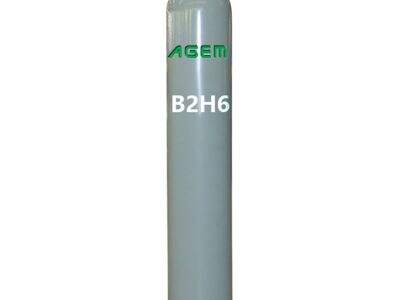Quid est Examinatio Cryogenica?
Aliquae novae ideae, quae vocantur examen cryogenicum! — AGEM multum laetatur hoc experimentum attulisse. Hoc experimentum fit, cum diversas materias in nimis bassas frigora ponimus ut videamus qualiter se gerant vel mutant. Quiddam simile experimento scientiarum! Talia examinationes sunt necessariae pro varietate ampla disciplinarum, inter quas volitationes spatiales ubi cognitio de modo quo res se gerunt in gelu profundo spatii est necessaria. Hoc etiam utilitas habebit quando vehicula et instrumenta medica conficiuntur, nam intelligere quomodo materiae se gerant in climatibus frigidis potest esse aspectus importans securitatis et firmitatis earum. Per annos didicimus utentes materiis talibus ut glacies siccata et CO2, diminuentes onera processuum examinationum dum simul eos roborantes melioribus resultatis.
Solutio Glacialis Siccae ad Conservandum Escam
Dolebamur laboriose revolutionem in usu glaciei siccae et disgregatione per progressus technologicos, quam AGEM fideliter ad perfectionem adducit ut adiuvet in conservatione ciborum et securitate consumptionis. Murray Moore, professor associatus ingeniariae chimicae in Universitate Albertana scripsit aliquid simile de glacie siccâ: "Glacies siccâ est congelatum anhydridum carbonicum quod permanet valde frigidum et non addit humiditatem si usata sit. Hoc necessarium est quia superflua umiditas possit corrumpere cibum. Glacies siccâ insuper facit praestantem conservatorem ciborum pro omnibus cibis quos non vis corrumpi qui tenendi sunt frigidiores quam 33 gradus Fahrenheit. Invenire eam et uti ea est etiam simplex, unde restaurantes et praestatores ciborum necesse habent cibum servare pro tempore longiore."
Beneficia Using CO2
Cum de usu CO2 in utroque cryogenico testando et ciborum servando agitur, AGEM est in praefronte progressionis. CO2 vere est gas magnae utilitatis, conservans alimenta incertata sicut etiam instrumenta medica et exemplaria biomedicinalia (biologica) ex laboratoriis (areis biohazard). CO2 habet optimum omnium lusum, quod etiam res frigidas servare potest (quod est exacte id quod vis quando aliquid ad certam temperaturam probas). Praeparationes tam pro testando quam pro conservando cibos nostrum sunt ingentes, itaque AGEM mutationem experientiae circa tutelam tecnicis suis CO2 efficit.
Fascinantes Usus Glacialis Carbonis
Glacies arida multas applicationes perexquitas in variis industriis revelavit, quas AGEM invenit. Adiuvat ad conservandum cibaria, regendum praedas, et transportandum mercium pereuntium. Item in campo medico utilis est, ubi adhibetur ad transportandum specimen et vaccina, quae frigida servari debent donec valeant. In aliis usibus, ut in reparetur vehicula, glacies arida adiuvat refrigerare motores et aptare partes inter se postquam expanduntur a calore. Glacies arida innumerabiles habet usus, sed AGEM semper novas applicationes invenit. Proinde semper discimus quomodo glacies arida res meliores faciat in multis industriis.
Conservatio ciborum per technologiam CO2
AGEM multum laudatur pro novis et innovativis approprachibus ad conservationem cum CO2. CO2 utilizatur ad amovendum aerem in plico, prolongando longam distantiam recentiam, colorem et superficiem ciborum. Hoc est valde utile quoque, quia cibus sapor bonum habet et melius apparet quando tandem consumitur. CO2 reducit necessitatem praeparatorum syntheticorum, qui sunt chimica ad custodiendum cibum ne putrescat. Ideo CO2 esset optio melior pro conservatione cibi. AGEM perseverat in exploranda nova potentialia applicationes pro CO2 in conservatione ciborum.
Summa
In universum, AGEM operam dat mirabilem, utendo glacie siccate et CO2 pro examinationibus cryogeneticis necnon conservatione ciborum. Technologia nostra nova item contribuit ad meliorem faciendum examinationem et ad conservandum cibum recentem per longiorem tempus. Glacies siccata et utilitates CO2 ostendunt applicationes excitantes quae docent nos quomodo possimus confidere in solutiones naturales sed efficaces ad iuvandas processus in scientia et cibo. Plane, AGEM semper invenitur utens glacie siccata et CO2 in suis perpetuis conatibus et etiam continuabimus intuendum quid aliud isti gases extraordinaria polleant praebere. Cremus esse multa plura inventa interessantia fieri posse et futurum splendide lucere!

 EN
EN
 AR
AR
 CS
CS
 DA
DA
 NL
NL
 FI
FI
 FR
FR
 DE
DE
 EL
EL
 IT
IT
 JA
JA
 KO
KO
 NO
NO
 PL
PL
 PT
PT
 RO
RO
 RU
RU
 ES
ES
 TL
TL
 ID
ID
 SK
SK
 SL
SL
 UK
UK
 VI
VI
 TH
TH
 TR
TR
 AF
AF
 MS
MS
 SW
SW
 GA
GA
 CY
CY
 BE
BE
 KA
KA
 LO
LO
 LA
LA
 MI
MI
 MR
MR
 MN
MN
 NE
NE
 UZ
UZ

